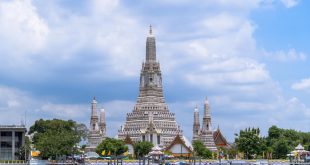Introduction
When it comes to history and culture there are few cities that compete with Athens. The city has been around for more than 26 centuries and has served as the political, economic and cultural center of Europe at various times. Whether you are more conservative traveler with aim to see as many museums as possible, or you are more open to unpredictable schedules and improvised trips, Athens has something for everyone. In this brief guide we will provide you the list of must-see sightseeing once in Athens. Also, we will share some tips where can you get the best food around the city.
Athens in Three Days – What to See and Do?
Athens is the capital and largest city of Greece. It is one of the oldest cities in the world, having been continuously inhabited for at least 7,000 years. The city is home to many ancient monuments, including the Acropolis, which is a UNESCO World Heritage Site and one of the most popular tourist destinations in Europe. The city also has a wide variety of cultural institutions, such as the National Archaeological Museum and Dionysius Theatre.
Athens was an important cultural center for many centuries because it was home to two major schools of philosophy: Platonism and Aristotelianism. The city also became an important center for Western civilization and Hellenism after the death of Alexander the Great.
Traveling to Athens is a great way to know more about Greek history, culture and tradition. It is also very entertaining way to meet new people and establish new friendships. Whether you are already planning your trip to Athens or still thinking about it, it is important to have some brief guidelines that can help you throughout this process. (The planning includes looking for the flight tickets, accommodation, ETIAS visa, travel insurance, museum tickets etc.). This is why here we present the list of top-rated sightseeing of Athens that you need to visit as soon as possible.
Acropolis and Parthenon
The Acropolis is a symbol of the glory of Athens and its culture. The Acropolis was constructed in the 5th century BC, as part of an ambitious building program by the Athenian statesman Pericles to celebrate Athens as an imperial power. It was completed in 432 BC, and has been used ever since as a symbol of victory, peace and democracy.
The Parthenon is the most famous monument on the Acropolis, with its famous sculptured frieze that depicts scenes from Greek mythology. It is not known who designed this magnificent building but it was built at a time when Greece was at its most powerful point under Pericles’ rule.
Ancient Agora
The Ancient Agora in Athens is an archaeological site and the best-preserved of all the ancient Greek agoras. It was built about 600 BCE and was a gathering place for people to buy and sell goods, discuss politics, or to hear lectures. Agora served as an important meeting space for philosophers such as Socrates or Plato who would teach their students there.
It is a square with a large open space on each side that also served as an assembly point for speakers, who would address the crowds from one of the four stone platforms around the edge. The Agora also had two fountains, one of which survives today.
Panathenaic Stadium
The Panathenaic Stadium is one of the most significant structures from the ancient world. Built in 330 BC, it was used for athletic events and other competitions.
The stadium was built on the site of an ancient track and field stadium that had been used since 600 BC. It was named after Athena, the goddess of wisdom and war. The first Panathenaic Games were held at this stadium in 566 BC.
Lycabettus Hill
Lycabettus Hill is a hill in Athens, Greece. It is located next to the Acropolis of Athens and has been historically important as it was the site of Pnyx and Lycabettus Theatre.
Lycabettus Hill is one of the tallest hills in Athens and it has been used as a fortification from ancient times. The Acropolis, which is on a lower elevation, is visible from its top. There are many legends about this hill and its name. One legend says that it was named after Lycaon who was turned into a wolf by Zeus for serving human flesh to him as a meal. In ancient times, it had been used as a place for executions and as an observatory for celestial events. It has been historically important as it was the site of Pnyx, an ancient Greek lawmaking body that met there to discuss political matters and pass laws.
Take a Day Trip to Meteora
Meteora, Greece is a monastic complex in central Greece. It consists of twenty monasteries built on natural sandstone rock pillars, at the edge of a high plateau near the town of Kalambaka.
It was founded in the 11th century AD, and reached its present form in 13th century AD. The monasteries are built on natural sandstone rock pillars and it is one of the most significant examples of Eastern Orthodox Christian architecture to be found anywhere in the world. Today Meteora is a UNESCO World Heritage Site.
The word “Meteora” means “suspended rocks” or “hanging rocks.” These names reflect their seeming precariousness at height as well as their origin.
Best Neighborhoods You Can Visit in Athens
Plaka
The Plaka neighborhood is the most touristy area in Athens. It is a lively area with many restaurants, shops, and cafes. It has a lot of history as it was built on top of the ruins of the ancient Agora.
Plaka is also home to a number of museums like the Benaki Museum and the Byzantine Museum. Acropolis is on the walking distance from the neighborhood.
Monastiraki
Monastiraki is a neighborhood in the center of Athens. It is famous for its flea market and its neoclassical architecture.
This neighborhood is home to many restaurants, cafés, and bars. It has a very lively atmosphere, but it also has a lot of traffic congestion due to all the people that visit it every day. This neighborhood is full of culture and history. It is the place where you can find some of the most important archaeological sites in Athens such as the Temple of Hephaestus and Hadrian’s Library.
Anafiotika
Anafiotika is considered one of the most beautiful neighborhoods in Athens and has been called “the most aristocratic district of Athens.” The houses are mostly neoclassical and date from the late 19th century to the early 20th century.
The neighborhood was originally a small fishing village that was later became an industrial zone during the 19th century. It’s located on the coast of Athens and has some interesting architectural features to it. The area is a UNESCO World Heritage Site in 1988.
Kolonaki
Kolonaki is one of the most expensive neighborhoods in Athens. It is a tourist attraction and a meeting point for the Athenian elite.
Kolonaki is one of the most expensive neighborhoods in Athens. It is a tourist attraction and a meeting point for the Athenian elite. The neighborhood offers many shopping opportunities, cafes, restaurants, and bars. Kolonaki also has some of the best schools in Athens.
Piraeus
Piraeus neighborhood is located in the southern part of Athens. The neighborhood is made up of four districts: Piraeus, Nea Ionia, Keratsini and Kallithea. Piraeus is a port town with an industrial harbor where you can find the largest shipyards in Greece. It also has a fishing port that exports fresh fish all over the world.
Conclusion
We hope that you will find this guide useful to have an absolute blast in Athens in three days. We tried to incorporate top-rated and must-see sightseeing of Athens in this guide, so you don’t have to hassle and bustle. Instead, you can focus on your vacations and make most out of it.
 Stride Post Latest News
Stride Post Latest News




